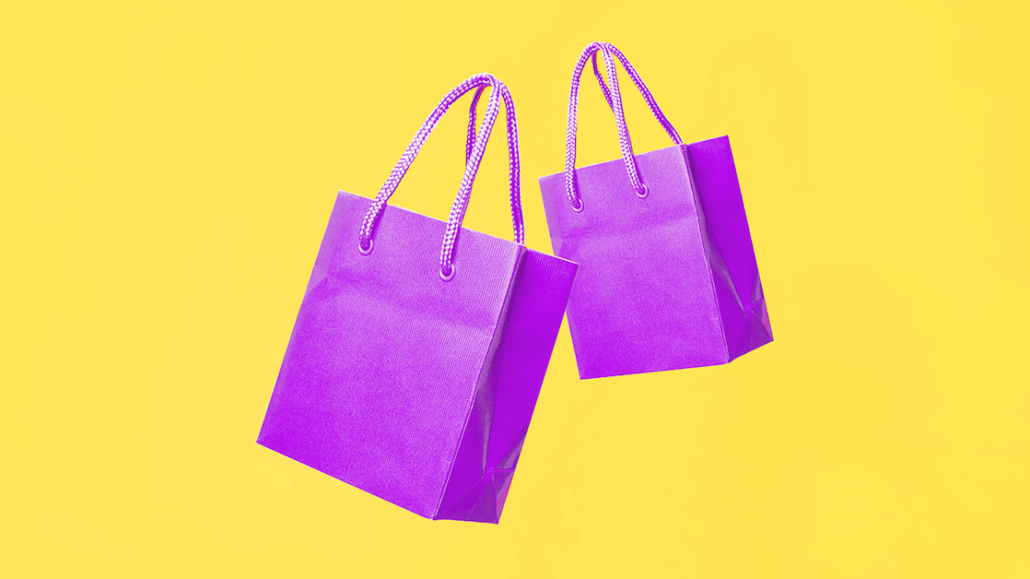By Antoinette Siu • November 13, 2024 •

Coming out of a presidential election blackout period in the U.S., many marketers expect to see increases across influencer marketing ad spending as brands tackle a shorter holiday season that is no less competitive.
As brands paused or reduced their influencer investments during the runup to the election, they also face the ongoing impact of inflation and the need to balance their media budgets going into 2025.
“The election was the largest anticipated blocker to a regularly scheduled 2024, and we knew coming into the year that we would need to get creative in ways we hadn’t in previous years,” said Renee Dornan, director of integrated media and comms planning at agency DNA. “The cost of inflation on top of the expansive Olympic programming and expected holiday seasonality only added fuel to the fire.”
That confluence of circumstances injects an added urgency to make up for lost time with a shorter holiday season. A late November Thanksgiving also affects clients’ Q4 considerations, said Sam Huston, svp of creative and media at digital agency Dept.
On top of all that, brands are still grappling with uncertainty with TikTok’s future, as well as shifts in paid media while balancing their social commerce strategies in the creator space.
Spending outlook is positive, with more integration
As far as global media investments, 71% of brands surveyed said they would significantly or slightly increase their influencer marketing budgets in 2025, per World Federation of Advertisers and consultancy Ebiquity. Another 22% indicated plans to maintain 2024 influencer budgets. (The participants collectively represent more than $66 billion in annual ad spend.)
With marketers inching their influencer budgets upward, Whalar Group has seen clients approach their campaigns via more long-term strategies — and budgets expanding up to five to 10 times in some cases.
“Engagements have been increasingly formalized through robust RFPs, reflecting a focus on multi-year partnerships,” said Neil Waller, co-CEO and cofounder of Whalar.
Ana Arnet, head of influencer and affiliate at Wpromote, sees brands “investing heavily” in influencer spending for 2025, and noted that more brands are moving beyond Meta platforms to spend on TikTok, YouTube and Snap to grow their reach and focus on integrating their influencer content across channels.
What about TikTok?
Last week, Canada ordered “the wind up of TikTok” operations (citing a national security review), a reality that adds another layer of uncertainty to its future for creators. In the U.S., TikTok’s ban or sale possibility also remains up in the air, although some argue a Trump administration would back off from a ban. Trump also recently expressed he was against banning the app, as that would help its rival Facebook.
In a recent installment of his Madison and Wall substack, media analyst Brian Wieser said “It’s hard not to imagine that many will choose to shift their spending whether because of the potential appearance of countering the spirit of the government’s action or because there are practical or logistical reasons why a Canadian marketer (or budget-holder) wouldn’t be able to engage with a foreign entity… It’s theoretically possible that broadcasters or streamers could see some incremental revenue, although very doubtful given the view we hold that marketers shift spending to next-best alternatives to accomplish their goals when one medium or media owner is unavailable.”
Tara Foulkrod, data practice lead at agency Vladimir Jones, also pointed out that TikTok “already lags behind other competitors” with creator funds and monetization programs. If the app gets banned in Canada — or the U.S., for that matter — sponsorships, which provide the majority of creator incomes, would disappear for those creators, Foulkrod explained.
“With major disruption to their livelihoods, you may see many content creators migrate to platforms like YouTube, which has been aggressively expanding its short-form content offerings,” she added. “However, it’s important to note that while YouTube offers a broader range of features and potentially higher revenue, it may not fully replicate the unique, short-form, and highly engaging format that has made TikTok so popular. Instagram Reels could also be a viable alternative for some, but it’s generally less user-friendly and has a different aesthetic appeal.”
Commerce push in Q5
Meta and TikTok in particular have also been promoting the idea of a “Q5” in recent years, encouraging brands to push in the time right after the holiday season — or take advantage of a lull between Cyber Monday and the end of the year. The strategy could work, given the growth of social media commerce features and emerging commerce and creator platforms like Shopify or Humanz.
For example, Shopify’s Collab tool connects creators with millions of brands to sell products. The platform reported seeing 290% growth in gross merchandise value this year, driven by creators through affiliate offers. The company also found 57% of U.S. shoppers say they are just as or more likely to discover products through influencer endorsements and promotions than a year ago.
For its part, TikTok continues to make the case for this less-competitive Q5 time as it pushes video shopping ads, sales channels and creator content like hauls and reviews. The platform cited internal data showing shopping posts also peak in January.
As TikTok put it, “The post-holiday period is a prime time to capture shoppers who are still in a buying mindset but facing fewer marketing distractions.”
https://digiday.com/?p=560390
